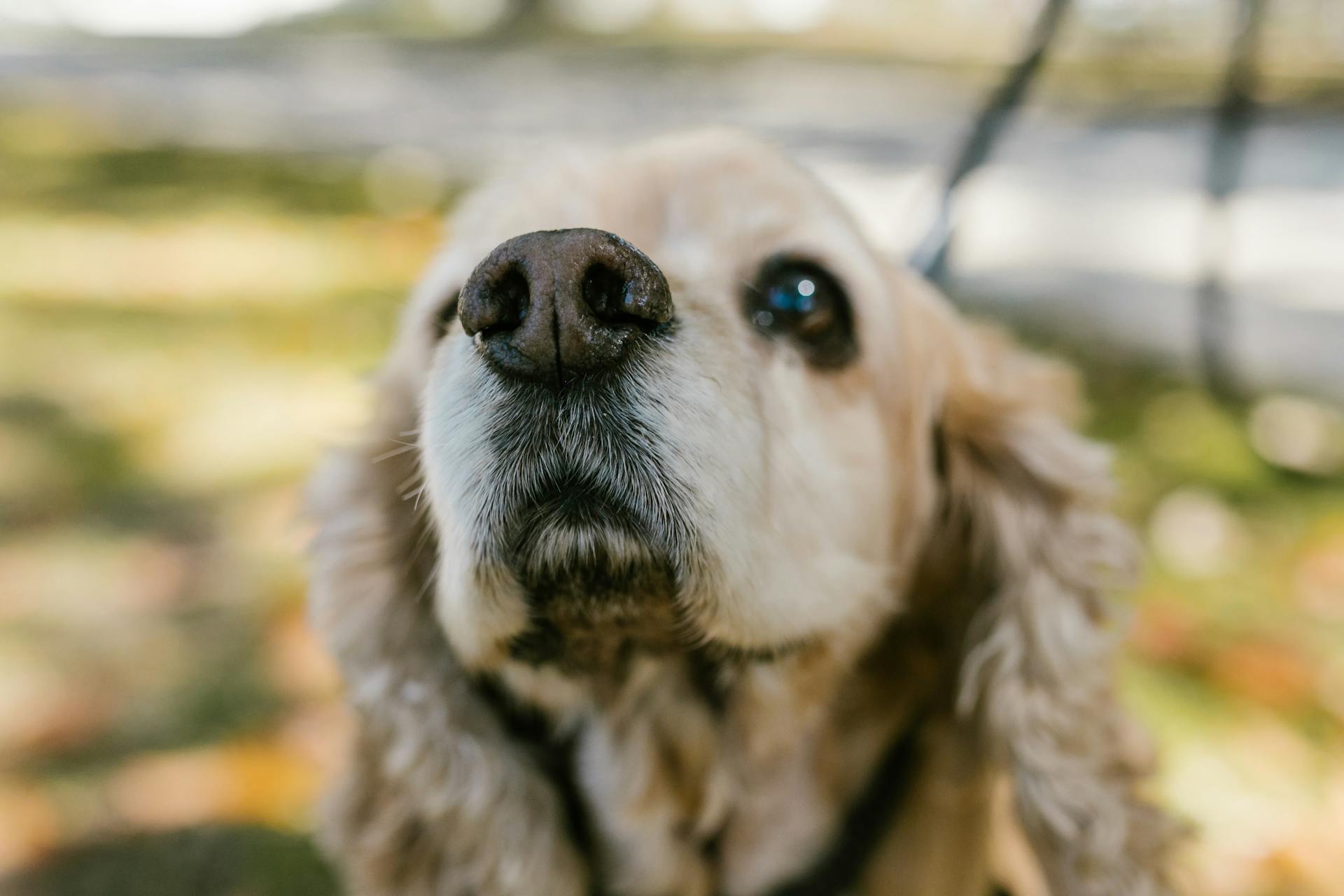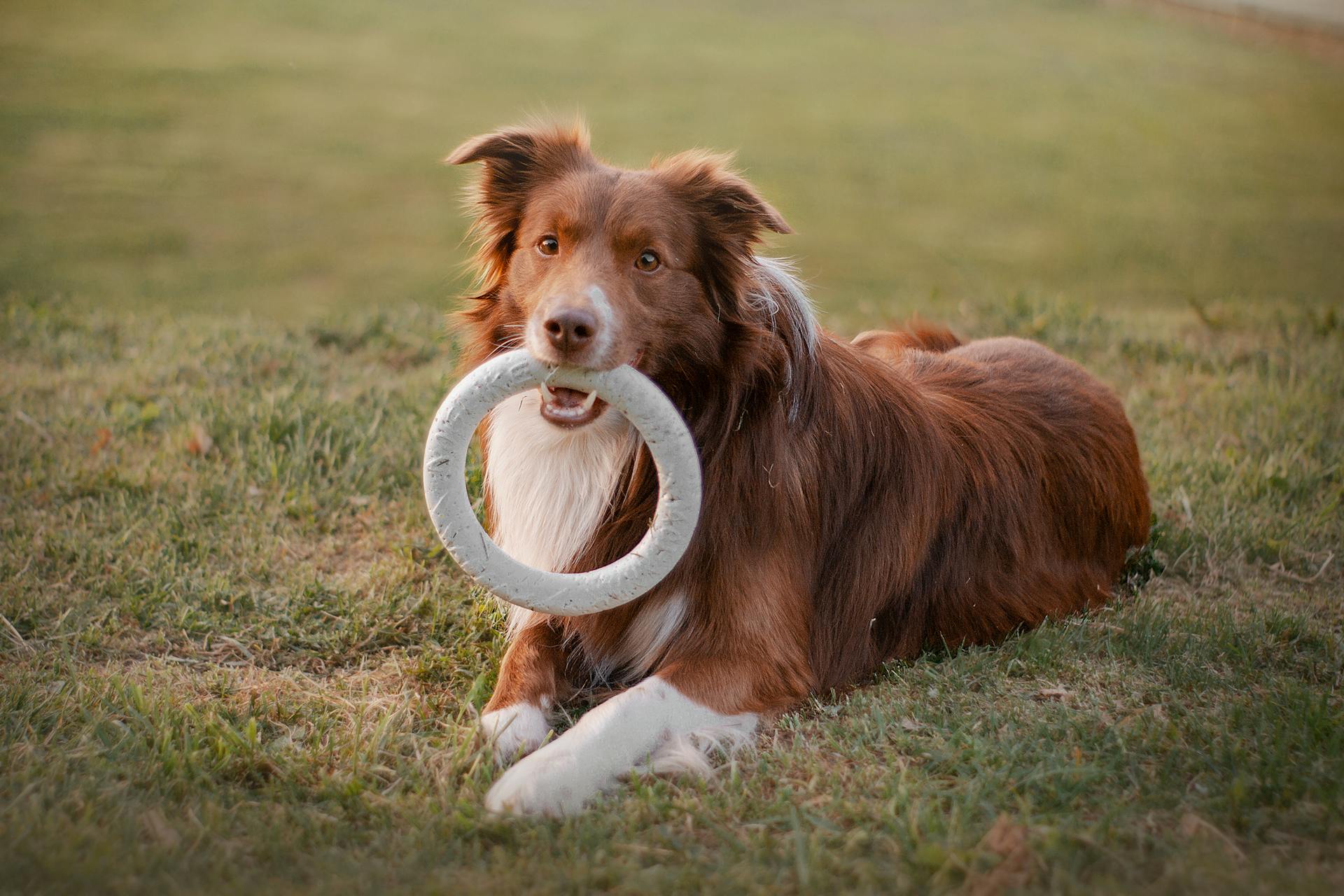
If your dog is diagnosed with tracheal collapse, surgery may be a viable option to alleviate symptoms and improve their quality of life. Surgical treatment can be quite costly, with prices ranging from $2,000 to $5,000 or more.
The cost of surgery can vary depending on factors such as the severity of the collapse, the size and breed of the dog, and the location where the procedure is performed. In some cases, surgery may not be necessary, and other treatment options can be explored.
Tracheal stenosis, a narrowing of the trachea, is a common complication of tracheal collapse, and surgery may be required to widen the airway. In severe cases, a tracheostomy may be performed to create an opening in the trachea for breathing.
Surgical treatment can provide long-term relief from symptoms such as coughing, wheezing, and difficulty breathing, allowing your dog to enjoy a better quality of life.
Consider reading: Diabetes Insipidus in Dogs Treatment Cost
What Is Tracheal Collapse?
Tracheal collapse in dogs is a serious condition that affects the trachea's ability to function properly. The cartilage rings that support the trachea play a crucial role in its function, and when these rings collapse or lose their structure, it leads to respiratory issues.
The trachea's shape and structure change as the condition progresses, causing a "collapse" effect that makes it harder for the dog to breathe. The trachea becomes softer and weaker, leading to a gradual reduction in its size.
There are four distinct grades of tracheal collapse in dogs, each with its own set of symptoms. Here's a breakdown of the different stages:
- Grade 1: Trachea is reduced by 25%. The trachea's shape is still normal.
- Grade 2: Trachea is reduced by 50%. The trachea is partially flattened.
- Grade 3: Trachea is reduced by 75%. The trachea is almost completely flat.
- Grade 4: Trachea reduced by 90%. The trachea is completely flat.
As the condition progresses, the symptoms become more severe, affecting not only the dog's breathing but also their overall quality of life.
Symptoms and Diagnosis
A collapsed trachea in dogs can be a serious condition, and recognizing the symptoms is crucial for timely treatment. The symptoms can vary depending on the stage of the condition, but they often include a dry, honking cough, difficulty breathing, and exercise intolerance.
Some common symptoms of tracheal collapse in dogs include a dry cough with no nasal discharge, honking sounds when coughing, and vomiting or gagging that accompanies coughing. These symptoms can be progressive and may worsen over time if left untreated.
A thorough physical examination is usually the first step in diagnosing a collapsed trachea. The veterinarian may gently palpate the trachea to induce coughing or listen for specific coughing sounds that are indicative of a tracheal issue.
Here are some of the most common symptoms of tracheal collapse in dogs:
- Dry cough with typically no nasal discharge
- Honking sounds when coughing
- Vomiting or gagging that accompanies coughing
- Difficulty breathing (may show up as panting)
- Unusual breathing sounds
- Lethargy or tiredness with no activity
- Blue discoloration of mucous membranes (gums and mouth)
Dogs: 10 Symptoms
If your dog is experiencing a collapsed trachea, it's essential to recognize the symptoms early on. A dry, honking cough is one of the most distinctive signs, often more noticeable after excitement or exercise.
The cough can be quite loud and may be accompanied by wheezing or gasping for air. Difficulty breathing is another common symptom, which can lead to episodes of gagging or even temporary choking, particularly after drinking water or eating.
A higher rate of shallow, rapid breathing is commonly seen in advanced cases, and a noisy breathing sound, such as a high-pitched wheezing or raspy sound, may accompany breathing in affected dogs. If your dog is experiencing any of these symptoms, it's crucial to consult a veterinarian for a comprehensive diagnosis and appropriate treatment plan.
Here are the 10 symptoms to watch for:
- Honking Cough
- Difficulty Breathing
- Exercise Intolerance
- Blue Gums
- Loss of Appetite
- Lethargy
- Increased Respiratory Rate
- Noisy Breathing
- Gagging or Choking
- Elevated Heart Rate
Physical Examination
A physical examination is usually the first step in diagnosing a collapsed trachea. The veterinarian may gently palpate the trachea to induce coughing.
To determine if the trachea is indeed collapsed, the veterinarian will listen for specific coughing sounds. These sounds are indicative of a tracheal issue.
By palpating the trachea, the veterinarian can assess its condition and make an educated diagnosis.
Treatment Options
Treatment options for tracheal collapse in dogs vary depending on the severity of the condition and the dog's overall health. Surgical intervention is often considered for severe or complex cases where other treatments have failed.
Medications like corticosteroids, bronchodilators, and cough suppressants can be used to manage mild to moderate tracheal collapse. These medications can help reduce inflammation, open up the airways, and alleviate discomfort.
Environmental factors can contribute to tracheal collapse symptoms, so making changes to your dog's environment can be an effective treatment approach. Using a harness instead of a collar and improving air quality inside the home can help reduce pressure on the windpipe.
Surgical procedures, such as stent placement, may be necessary for more severe cases of tracheal collapse. This is typically considered after other treatments have been tried.
Telemedicine options are available for pet owners who are unable to reach a vet in person. Virtual consultations can provide qualified advice and urgent medical care from the comfort of your home.
Collaborating with a skilled vet is essential to determine the best treatment approach for your dog. They can help you develop a personalized treatment plan that targets specific signs of tracheal collapse.
Take a look at this: Vets Dog Treats
Dog Care and Recovery
After surgery, patients are recovered in an oxygen cage and monitored for signs of respiratory distress. They are sent home on a tapering dose of corticosteroids, 2 weeks of antibiotics, and client instructions to administer sedatives and antitussives as needed.
Stress, excitement, and exercise need to be limited for 4 weeks to prevent complications. Patients should be reevaluated at 1, 3, and 6 months post-procedure.
Immediate improvement in quality of life is often noted by clients, despite the progressive nature of the condition.
Dogs: Frequently Asked Questions
Many dogs live relatively normal lives with proper medical management, although severe cases may require surgical intervention for a better quality of life.
If your dog has a collapsing trachea, it's essential to work closely with your veterinarian to determine the best course of treatment.
The severity of a collapsing trachea can vary greatly, and it's not uncommon for dogs to experience episodes of coughing and difficulty breathing.
Dogs with collapsing trachea are not necessarily suffering, but they may exhibit signs of distress such as panting and wheezing.
Proper medical management can help alleviate symptoms and improve your dog's quality of life.
In severe cases, surgical intervention may be necessary to prevent further complications.
Dogs with collapsing trachea can still bark, but they may experience difficulty breathing afterward.
Postsurgical Care
After surgery, your furry friend will need some TLC to ensure a smooth recovery. They'll be recovered in an oxygen cage and monitored for signs of respiratory distress.
It's essential to follow the veterinarian's instructions carefully, as patients are sent home on a tapering dose of corticosteroids, 2 weeks of antibiotics, and client instructions to administer sedatives and antitussives as needed. This is crucial to prevent complications.
Limited stress, excitement, and exercise are necessary for 4 weeks to aid in the healing process. This means no overexerting your dog or exposing them to stressful situations.
Regular check-ups are vital, with reevaluations scheduled at 1, 3, and 6 months post-procedure. This will help monitor your dog's progress and catch any potential issues early on.
Coughing is expected due to the stent initially irritating the airway, but it's essential to control it to prevent stent fracture or granulation tissue formation.
Understanding Tracheal Collapse
A collapsed trachea in dogs is a chronic condition that can be a real challenge for pet owners. It's a condition where the tracheal rings that hold the shape of the windpipe weaken, resulting in the flattening of the tube.
This can make breathing difficult and often leads to a range of respiratory problems and other complications. In most cases, the collapsed trachea is a progressive condition that worsens over time.
The condition is often seen in older, small breed dogs like Chihuahuas, Pomeranians, and Yorkshire Terriers, although it can affect dogs of any breed and age. Genetic factors, age, weight, environmental factors, and underlying respiratory conditions can all contribute to the development of a collapsed trachea.
Here are some key risk factors for tracheal collapse in dogs:
- Genetic predisposition: Some dogs are born with weaker cartilage in their trachea, making them more susceptible to collapse.
- Age: Older dogs are at a higher risk of developing a collapsed trachea as their cartilage becomes weaker and less elastic over time.
- Weight: Overweight and obese dogs are more likely to suffer from a collapsed trachea due to the additional pressure on their trachea.
- Environmental factors: Exposure to irritants like smoke, dust, or harsh cleaning chemicals can aggravate the condition.
- Underlying respiratory conditions: Chronic respiratory conditions like bronchitis can weaken the tracheal cartilage, leading to a collapsed trachea.
Understanding these risk factors is crucial for effective treatment and prevention of tracheal collapse in dogs.
What Is a Trachea in Dogs?
The trachea, also known as the windpipe, is a tube-like structure that connects the nose and mouth to the lungs, allowing for the passage of air during breathing.
It's a vital part of a dog's respiratory system, and without it, breathing would be extremely difficult.
What Causes Collapsed?
Collapsed trachea in dogs is a serious condition that can be caused by a combination of factors. Genetics play a significant role, with some breeds being more susceptible to weaker cartilage in the trachea.
Older dogs are at a higher risk of developing a collapsed trachea due to the natural weakening of cartilage over time. This is a common issue in many breeds, regardless of size.
Excess weight puts additional pressure on the trachea, making overweight and obese dogs more likely to suffer from a collapsed trachea. This is a concerning trend, especially in breeds prone to obesity.
Environmental factors can also contribute to the development of a collapsed trachea, with exposure to irritants like smoke, dust, or harsh chemicals exacerbating the condition. This highlights the importance of a safe and healthy environment for our furry friends.
Here are some common risk factors for tracheal collapse in dogs:
- Genetic predisposition
- Age
- Weight
- Environmental factors
- Underlying respiratory conditions
Frequently Asked Questions
How successful is surgery for collapsed trachea in dogs?
Surgery for collapsed trachea in dogs is successful in about 75% of cases, offering a significant improvement in symptoms. Medical management alone can also show improvement in around 70% of dogs
How much does a stent cost for a dog with a collapsed trachea?
Costs for a dog's stent surgery can range from $2,000 to $7,000, depending on the severity of the condition and additional testing required. The overall cost can vary significantly, so it's best to consult with a veterinarian for a more accurate estimate
Does pet insurance cover collapsing trachea?
Yes, pet insurance may cover collapsing trachea, a common respiratory condition in pets, depending on the policy and provider. Learn more about how pet insurance covers surgery for this condition.
Sources
- https://www.animalspecialtyemergencycenter.com/pet-parents/medical-briefs-and-information/tracheal-collapse
- https://www.cliniciansbrief.com/article/tracheal-collapse-dogs
- https://www.vetmedutah.com/post/collapsed-trachea-in-dogs
- https://www.dutch.com/blogs/dogs/collapsed-trachea-in-dogs
- https://www.littlecrittersvet.com/tracheal-collapse.pml
Featured Images: pexels.com


